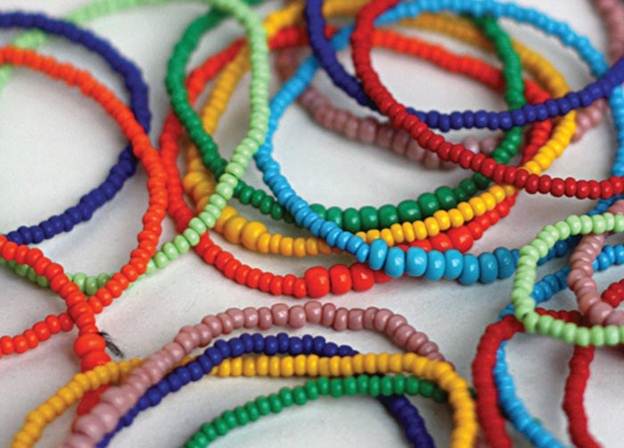Psychology Speaking
The rhino onslaught has triggered outrage
in South Africa. It's a wonderful demonstration of standing together to protect
our heritage, but the question we need to ask ourselves is why many of us feel so
much more for animals in distress than for human atrocities or the disappearance
of traditional cultures, Gauteng-based clinical psychologist Pierre Brouard sheds
some light on this:
"It's not a clear-cut answer because
some people are drawn to multiple issues and give to both human and animal causes.
Perhaps the most fundamental difference is that human atrocities are complicated
and tied into all sorts of social, political, legal and cultural issues, whereas
the situation is far more clear-cut with animals. They cannot defend themselves
or prevent their own pain and are therefore the victims of forces entirely beyond
their control. We have enclosed them in game reserves or zoos, and we therefore
have a moral duty to look after them. Linked to this is the idea of innocence, where
animals are truly "innocent" and hove done no "wrong". Hence
when we see photographs of a butchered rhino or a calf hovering in confusion over
its slaughtered mother, we are easily triggered into wanting to do something to
prevent the horror. And so we buy bracelets and donate to charities and sign petitions
to assuage our sense of rage and helplessness, allowing us to feel we are 'doing
something'. We also feel a sense of ownership about rhinos. They are our rhinos;
they are here and very dear to us, and it makes us feel good and 'empowered' to
at least try to help to save one or two of them."
Looking Good While Doing Good
Over the past year several initiatives
have emerged to raise money to help fight everything from rhino poaching and
environmental degradation to HIV. Bead bracelets are a visible, inexpensive way
to raise awareness and support for these issues, with large retailers rising to
the opportunity to assist. Their proviso is that the monies are managed by well-respected
conservation and non-profit organizations.
The Bracelet That Shakes The World
"Wear the bracelet and shake the
world!" This is the message behind the Millennium Bracelet Shake the World
campaign, launched in association with the Rainbow Collection and Africaignite
in August 2011 and distributed through 40 Edgars stores. Representing the
Millennium Development Goals set by the United Nations in 2000, these bracelets
come in eight colors:
·
Eradicate
extreme poverty and hunger - yellow
·
Achieve
universal primary education - lime green
·
Promote
gender equality and empower women - orange
·
Reduce
child mortality - turquoise
·
Improve
maternal health — pink
·
Combat
HIV/AIDS, malaria and other diseases — red
·
Ensure
environmental sustainability - green
·
Develop
a global partnership for development - blue
The bracelets are handmade by women in
rural communities throughout KwaZulu-Natal. Approximately 800 headers are involved
in the initiative, which aims to market one million Millennium Bracelets through
a variety of channels, locally and internationally. Edgars alone is hoping to raise
R700 000 by selling over 100 000 Millennium Bracelets at R19,95 each. All the monies
raised support the women crafters and a range of development and conservation
initiatives that reflect the eight goals. On the environmental side, Africa Ignite
is involved in water, sanitation and renewable energy projects for rural
schools and communities in KwaZulu-Natal.
Edgars spokesman, Lerato Zako, says they
are not at liberty to quote how many bracelets have been sold to date, but that
they are selling well as they are prominently positioned at the till points.
Edgars Marketing Executive Belinda Godfrey
adds this is a call for action: "By wearing the Millennium Bracelet, fashionable
consumers become part of the solution: they contribute financially, while helping
raise awareness of the Millennium Development Goals. Edgars is a proud supporter
of this worthy cause. We particularly love the opportunity to look good while
doing good!"

The Rhino Force Bracelet
Rhino Force is a philanthropic
commercial initiative that dedicates R6,50 from the sale of each Rhino Force bracelet
to the Endangered Wildlife Trust's (EWT) Rhino Fund. Funds are for rhino and include
conservation and anti-poaching activities (such as funding trained sniffer
dogs at Oliver Tambo International Airport's cargo section). Rhino Force founding
member, Joanne Lapin, explains that the bracelets retail at R30 apiece, with the
retailer receiving R5, EWT R6,50 and the remaining R18,50 going into the costs of
raw materials, packing, distribution and to pay the people from disadvantaged communities
around Gauteng who make the bracelets. "We have a wide range of retailers including
CNA and we are in negotiation with GROUPON and Edgars," she says. "We
even have Asian restaurants selling them to show they are against rhino
poaching. Only a small percentage of Asians are involved in this racket, yet
all Asians are unfairly tarnished by it." Since the launch of the campaign
in August 2011, over 250 000 bracelets have been sold. Lapin also focuses on "endangered
people" through the Kalahari Spa product range she distributes. "Our
Kalahari Beads Project helps support Khoisan families in the Kalahari and we have
a running water and education project for Khosian children, including an initiative
to ensure the children continue to learn their traditional language," she
explains. "The Khoisan are the world's oldest people but their culture is under
threat. I want to create billboards linking the rhino and Khoisan, with a child
and rhino walking together into the sunset."